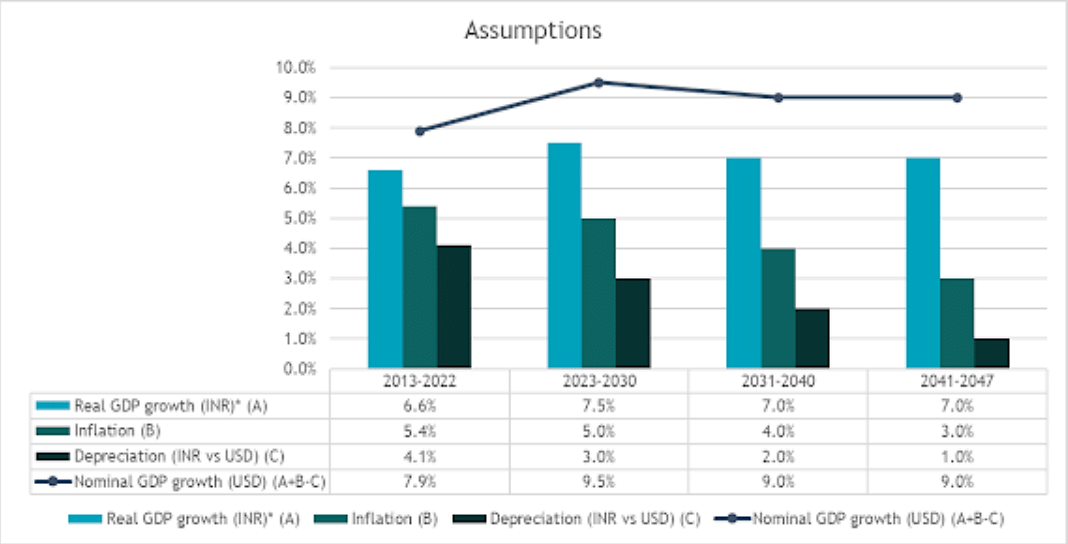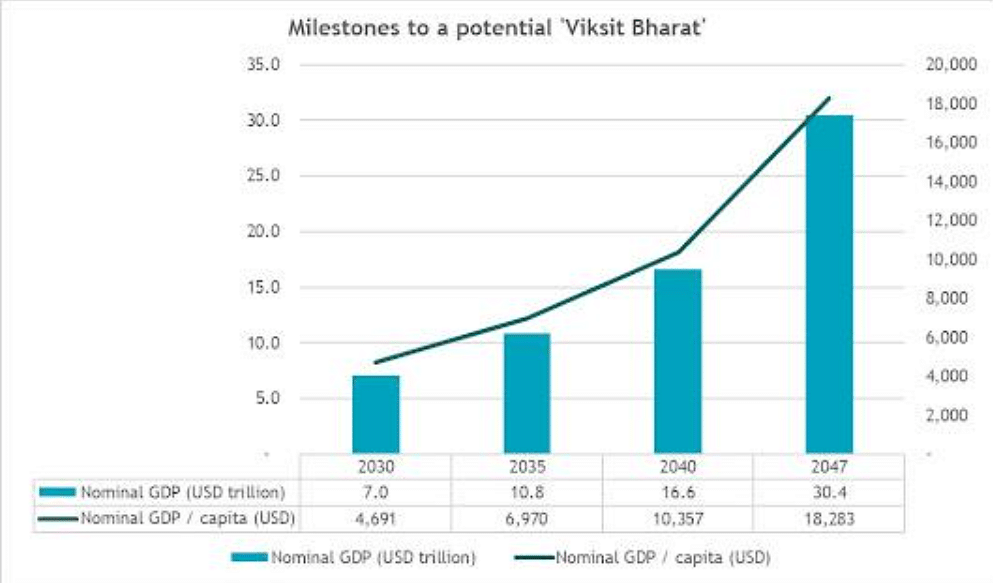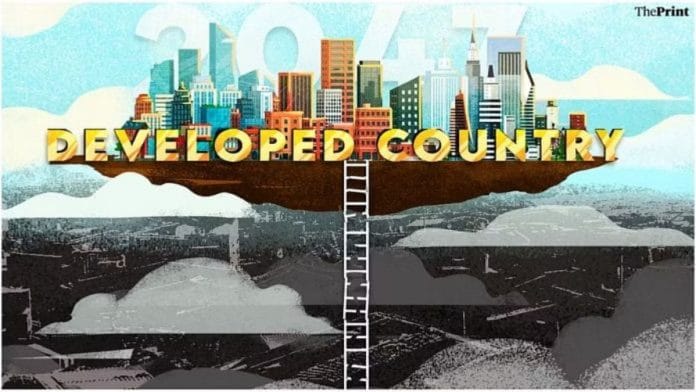Thank you dear subscribers, we are overwhelmed with your response.
Your Turn is a unique section from ThePrint featuring points of view from its subscribers. If you are a subscriber, have a point of view, please send it to us. If not, do subscribe here: https://theprint.in/subscribe/
This is Part 2 of the article, which would be an attempt to come up with what could be potential milestones in a successful journey towards becoming ‘Viksit Bharat’, using reasonable assumptions. You can read Part 1 here, which explored the lack of any public accountability at present for the government’s ‘Viksit Bharat’ vision and why that could easily lead to a loss of focus yet create an atmosphere of false confidence within the political machinery.
India’s nominal GDP needs to grow by 9x during the period from 2022 to 2047, with per capita GDP, the KPI which determines the ‘developed nation’ status, needing to grow by 7.5x.
The only point I will make about the targets set is that they do seem quite ambitious (which they should be) and cannot be achieved if India continues at its “economic growth” potential of around 6%, which is the measure of our capacity to grow given reasonable governance. This is the approximate pace at which real GDP has grown over the last 30 years. My (very crude) estimations suggest that real GDP growth needs to compound at an average of around 7.2% until 2047 to reach the per capita GDP target. As a comparison, growing at an average of 6% instead of 7.2% over the period (other assumptions remaining unchanged) would only lead us to a GDP of USD 23.3 trillion and per capita income of ~USD 14,000 by 2047, 22% short of the desired target. And we need to remember that being able to grow at the same pace becomes more and more difficult as the base grows.
What I have tried to do in the below paragraphs is make some assumptions to arrive at what could be the GDP per capita milestones that could be monitored to evaluate progress made on the path to becoming a developed nation by 2047. Before going there, one thing I am not certain about is how the threshold for per capita GDP to determine the ‘developed country’ bracket has been arrived at. I assume that the relevant figure being looked at today is the World Bank threshold for classification of countries as ‘high income’ – it currently stands at $14,005. To keep income classification thresholds fixed in real terms, this figure is adjusted annually for inflation using the Special Drawing Rights (SDR) deflator, a weighted average of the GDP deflators of China, Japan, the United Kingdom, the United States, and the Euro Area. But let us assume for now that a per capita GDP of ~$18,000 in 2047 is enough to propel India to ‘developed nation’ status.
Let us go through the assumptions now.

This is essentially a back of the envelope derivation of assumptions to arrive at the USD 30 trillion nominal GDP target by 2047. While I lack the expertise to make such assumptions, I also believe that making estimations so far into the future is anyways a futile exercise and cannot really be credibly conducted as so many uncertainties creep into the picture. More fiction has probably been written in Excel than Word in the limited history of these Microsoft tools. Hence, it is important to focus on medium-term goals, and periodically evaluate progress with honesty and humility.
The milestones based on the above assumptions are laid out in the graph below. These could be considered as indicators to measures progress towards the ‘Viksit Bharat’ vision.

An important milestone comes at the end of the decade, by when India should have roughly doubled its nominal GDP and per capita GDP in order to stay on course. For that to happen, based on the assumptions considered previously, inflation needs to be kept in check, depreciation of the rupee against the USD should be lower than what it has been historically and most importantly, the real economic growth should average 7.5%, which means that growth certainly needs a significant boost from its current levels.
These pieces are being published as they have been received – they have not been edited/fact-checked by ThePrint


